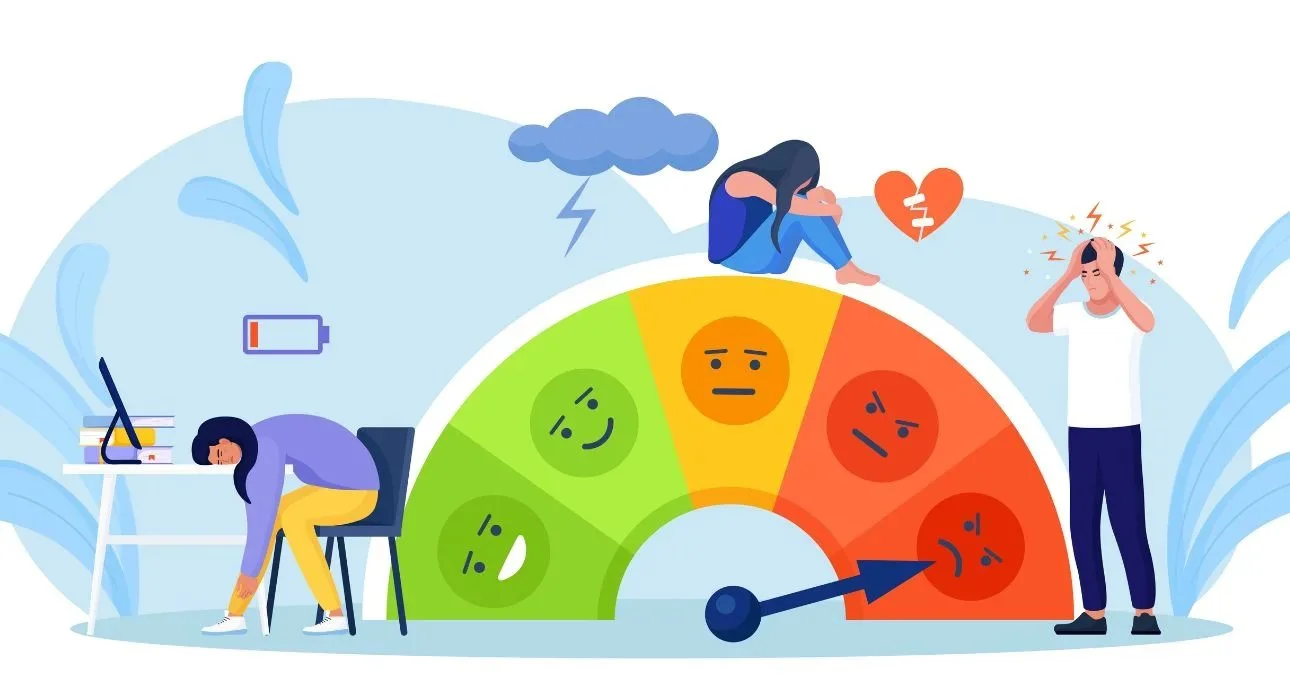Healthy and Unhealthy Mood Regulation: Understanding How We Cope With Our Emotions
Every one of us experiences a wide range of moods—joy, sadness, anger, fear, calm, excitement, and everything in between. These emotional shifts are a normal part of being human. But how we manage or regulate our moods determines whether we respond to life’s challenges in healthy or unhealthy ways.
Mood regulation refers to the strategies we use—consciously or unconsciously—to influence how we feel, how long an emotion lasts, and how we express it. It’s not about “controlling” emotions or pretending to be happy all the time. Rather, it’s about understanding our feelings, responding to them with awareness, and finding ways to cope that promote well-being instead of harm.
What Healthy Mood Regulation Looks Like
Healthy mood regulation is not about avoiding uncomfortable emotions—it’s about managing them in ways that are constructive and compassionate. It allows us to acknowledge what we feel, understand why we feel it, and take action that aligns with our values.
Here are some examples of healthy emotional regulation strategies:
1. Emotional Awareness
Recognizing and naming your emotions is the first step. Instead of saying, “I’m just off today,” you might pause to identify, “I’m feeling anxious because I’m uncertain about tomorrow’s meeting.” Awareness helps you respond thoughtfully instead of reacting impulsively.
2. Mindfulness and Acceptance
Mindfulness encourages staying present without judgment. When we allow emotions to come and go like passing weather, we reduce their power over us. Acceptance doesn’t mean liking the emotion—it means recognizing it as part of your current experience.
3. Self-Soothing and Grounding
Healthy regulation often involves comforting yourself through calming activities: deep breathing, taking a walk, journaling, listening to music, or connecting with nature. These practices calm the nervous system and create emotional balance.
4. Expressing Emotions Safely
Talking about how you feel with a trusted person, therapist, or support group can help release bottled-up emotions. Creative outlets—such as art, movement, or writing—also help channel emotions productively.
5. Reframing Negative Thoughts
Cognitive reframing involves looking at a situation from a different perspective. Instead of “I failed,” a healthier mindset might be “I learned something important about what doesn’t work.” This doesn’t deny the difficulty but focuses on growth.
6. Setting Healthy Boundaries
Knowing your limits and communicating them protects emotional energy. Saying “no” or stepping back from stressful environments is an act of self-respect, not selfishness.
What Unhealthy Mood Regulation Looks Like
Unhealthy mood regulation happens when people use coping methods that bring short-term relief but cause long-term harm or emotional instability. Often, these strategies develop unconsciously as defense mechanisms against pain, fear, or rejection.
Common examples include:
1. Avoidance or Emotional Suppression
Pushing feelings away—through distraction, denial, or constant busyness—can temporarily numb discomfort, but unresolved emotions tend to resurface as anxiety, irritability, or even physical symptoms.
2. Substance Use or Addictive Behaviors
Turning to alcohol, drugs, food, gambling, or excessive screen time to escape emotions may offer short-term relief but can lead to dependency, mood swings, and deeper emotional distress.
3. Aggression or Emotional Outbursts
Some people express emotions impulsively through anger, shouting, or blame. While it may feel like “releasing” tension, this form of expression often damages relationships and reinforces shame or guilt afterward.
4. Self-Criticism and Negative Self-Talk
Constantly telling yourself “I shouldn’t feel this way” or “I’m weak for feeling sad” invalidates your emotions. This internal criticism prevents healing and increases feelings of worthlessness.
5. Emotional Withdrawal
Shutting down emotionally—becoming distant, detached, or unresponsive—can feel like protection, but over time it can lead to isolation and disconnection from others.
Finding Balance: From Reaction to Regulation
The journey toward healthy mood regulation begins with self-awareness. Notice your emotional patterns: How do you typically respond when you’re stressed, sad, or angry? What helps you feel calmer, and what tends to make things worse?
It’s also important to remember that no one regulates perfectly all the time. Emotional regulation is a skill—one that improves with practice, reflection, and sometimes professional support. Working with a therapist can help you identify unhealthy patterns and develop tools to manage emotions more effectively.
Healthy mood regulation doesn’t mean you never get upset or anxious. It means you can experience those emotions, understand them, and choose how to respond—rather than being controlled by them. Over time, these skills lead to greater emotional stability, resilience, and inner peace.
A Gentle Reminder
Your emotions are not your enemy—they are messages from your inner world, guiding you toward understanding, healing, and growth. Learning to regulate them with compassion allows you to respond to life’s challenges not from fear or avoidance, but from strength and awareness.
If you’re struggling to manage your emotions or find healthy coping strategies, counseling can help.
At Safe Space Counseling Services, we provide compassionate, evidence-based support to help you understand your emotions, develop self-awareness, and build resilience.



